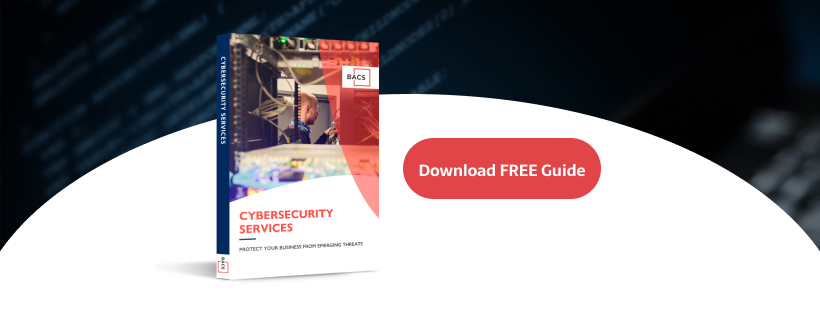The pace of technology innovation continues to accelerate. New versions of software are launched every day to keep businesses on the cutting edge of digital transformation and customer service. Frequent technology upgrades and modernization of enterprise systems is no longer an option―it’s a requirement in today’s highly-competitive business environment.
While ongoing infrastructure improvements are essential for sustained business growth, these projects can also create unintended (and sometimes dangerous) gaps in your security framework. Without proper planning and a clear blueprint, what may seem like run-of-the-mill system upgrade can instead create the perfect opportunity for a cybercriminal to attack hidden weaknesses and breach your defenses.
Keeping systems and data safe and secure in an era of escalating threats requires a well-planned, proactive approach―built around best practice measures, smart policies, and a defined security framework that aligns with your business goals. Following are some of the common challenges that can elevate your security risk when implementing new technology or modernizing existing infrastructure.
Lack of Visibility
Maintaining a clear view of all devices and network assets across physical, virtual and cloud infrastructure is critical to ensure optimum protection. The challenge for many organizations lies in the reliance on disparate, outdated systems to track and monitor network activity. Optimum protection can be best achieved by relying on more centralized security platforms that allow you to automate network discovery, improve visibility and quickly identify attack points, irregularities, patterns and other suspicious activity. Compared with point tools, these integrated systems require fewer IT resources to maintain effective threat protection. Every upgrade project has its own set of risks and benefits. While implementation speed is important, it should never supersede the need to keep systems and data safe and secure.
Poor Integration
The best approach to minimizing risk in technology deployments is finding an optimum balance between speed, flexibility, and security. A common challenge in many IT environments is the diverse range of disparate security platforms from a variety of vendors. Meanwhile, legacy technology requires increased IT resources and support as they age. Eventually, these growing inadequacies and service demands can create dangerous security gaps, integration barriers, and scalability challenges. Disconnected systems and components make information sharing difficult, creating a recurring challenge for IT teams responsible for monitoring potential threats across the enterprise. Disjointed communication leads to unreliable processes and protocols. Left unaddressed, these concerns create uncertainty about what to do in the event of a threat and who’s responsible.
Inadequate Planning
Today’s top-performing companies operate with some of the best digital technology available, yet many are still unable to prevent a near catastrophic security breach. Poor risk assessment and a lack of planning are among the top reasons. Infrastructure planning must take into account the present, along with the future, so it’s important to integrate security into your operational and infrastructure foundation from the beginning. In planning a technology upgrade, it’s important to look beyond the potential cost savings and make decisions in the context of sustainability and long-term goals. That means carefully considering your security requirements, computing needs, resources, and many other factors. It’s complicated, and often involves trade-offs with significant strategic impact.
Substandard Monitoring
As your infrastructure expands and evolves, problems can emerge, including redundancies, inefficiencies, and performance gaps. The problem is only compounded in the midst of a technology upgrade. The temporary disruption of systems and applications can make it difficult to determine what components are secure and which ones are not. This is where network monitoring can provide substantial value, conveying critical insights that can help identify gaps in application and perimeter defenses by notifying you of potential problems before any damage actually occurs. Rather than waiting for problems to materialize, you can proactively identify areas that are vulnerable and take action before they impact your business. Regular infrastructure monitoring can also provide an accurate audit trail when investigating an incident.
Disorganized Response Handling
To effectively safeguard business data and assets, it’s important to close the gaps and address the vulnerabilities that other improvement projects might create. That includes setting up a defined plan for how security incidents should be reported and resolved. In the event of a problem, clear communication is as important as solving the underlying technical issue. It’s essential that everyone impacted by an event clearly understands their responsibilities and the role they play in the recovery effort. This is particularly important when working with third-party providers. Should an outage occur, you need to have confidence in your recovery plan to know exactly how long it will take for the business to be back online―with systems restored and critical data intact.
Make Security a Business Priority with Help from BACS IT
Preventing a security lapse during an infrastructure upgrade requires careful planning and an operating culture firmly focused on safeguarding data and mitigating risk. Although there is no way to defend against all types of attacks, new tools and techniques for detecting and identifying threats can help protect data without hindering mobility or productivity.
While staying on the cutting edge of hardware and software advancements is critical to business growth, maintaining world-class security and business continuity is a vital component to ongoing sustainability and success.



